Table of Contents
– Introduction
– Bicycle Tire Market Overview
– Key Considerations When Selecting Bicycle Tires
– Conclusion
Introduction
Selecting the right bicycle tire is crucial for maximizing performance, comfort, and enjoyment on the rides. With so many options on the market, finding the perfect tire can seem daunting. In this comprehensive guide, we’ll break down the key factors to consider when choosing a bicycle tire and highlight some of the top models for various riding disciplines in 2024. Whether your customer is a road racer, gravel adventurer, or mountain bike shredder, we’ve got you covered. Let’s dive in and find the ideal rubber to keep you rolling through all of the cycling pursuits.
Market Overview
The global bicycle tire market continues to expand, with a projected CAGR of 6.8% from 2023 to 2029. Valued at USD 7.4 billion in 2023, the market is expected to reach USD 12.1 billion by 2029. Key players like Continental, Schwalbe, Maxxis, and Vittoria are driving innovation with advanced compounds, puncture protection technologies, and tubeless compatibility. The growth of gravel cycling and e-bikes has spurred demand for wider, more versatile tires. Sustainability is also a focus, with brands exploring eco-friendly materials and production methods. As cyclists seek to optimize their ride experience across various terrains and conditions, the bicycle tire market is poised to meet those diverse needs with cutting-edge offerings in the coming years.

Key Considerations
Tire Size
The tire size is determined by the wheel diameter. The most common wheel/tire sizes are:
– 700c (ISO 622mm) – Standard on most road bikes and many hybrid/commuter bikes. Tire widths range from 23-45mm.
– 650b (ISO 584mm) – Found on some gravel bikes and smaller road bikes. Allows fitting wider tires on a smaller wheel. Common widths are 32-50mm.
– 26″, 27.5″, 29″ – Standard mountain bike wheel sizes. 26″ is an older standard, most current mountain bikes use 27.5″ (650b) or 29″ (700c). Widths range from 1.9″-2.6″+.
To determine the wheel size, check the sidewall of the current tires. It will be printed with numbers like 700x28c or 27.5×2.1″. The first number is the approximate outer diameter of the tire, the second is the width.

Tire Width
Tire width affects the ride feel, traction, and rolling resistance of the tire.
Road bikes:
– 23-25mm was the old standard
– 25-32mm is now more common for better comfort and lower rolling resistance
– Maximum width depends on frame clearance
Gravel bikes:
– 32-40mm for mixed surface riding
– 40-50mm for rougher gravel and more comfort
– Some fit 650bx47-54mm or 27.5×2.1″ MTB tires for serious off-road capability
Mountain bikes:
– 2.2-2.4″ for XC and trail riding
– 2.5-2.6″+ for enduro and downhill
– 3.0″+ for plus tires and fat bikes
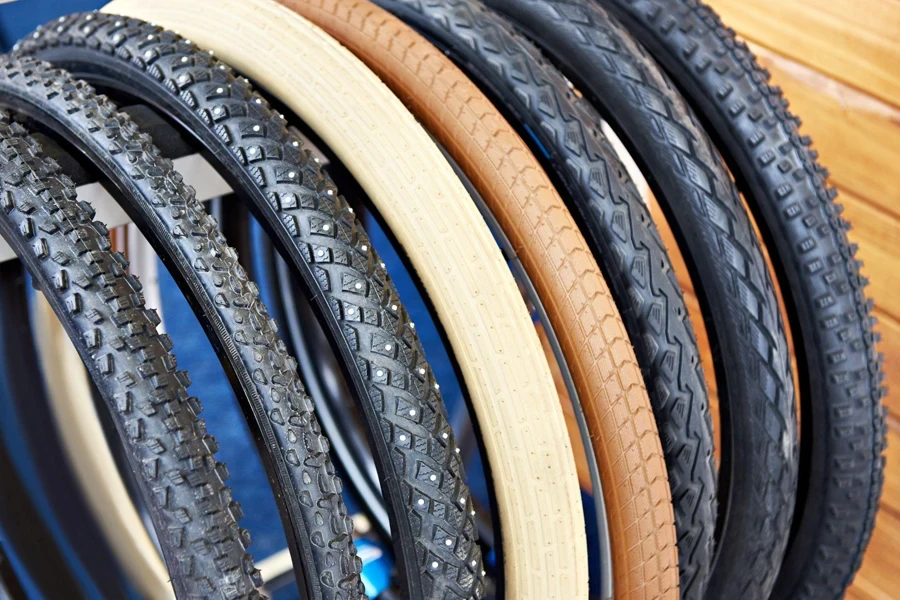
Retailers advise your customer: While selecting bicycle tires, first check the frame and fork clearance to determine the maximum tire width your bike can handle, ensuring enough space for full inflation. Wider tires offer enhanced comfort, better traction, and support lower pressures, making them versatile for various terrains. Conversely, narrower tires are lighter and offer less rolling resistance on smooth surfaces. Tread pattern is also vital: slick tires are best for pavement, small knobs for mixed surfaces, and aggressive knobs for loose terrain. If unsure about tire size, consult the bike’s manufacturer specifications, as most bikes have a recommended tire size range.
Tread Pattern
Tread patterns play a crucial role in determining a tire’s performance characteristics. The design, size, and spacing of the tread knobs influence grip, rolling resistance, and overall handling on various surfaces.
Rolling Resistance: Slick tires, with minimal tread, offer the lowest rolling resistance on smooth surfaces, thanks to a uniform contact patch that ensures efficient movement. For hard-packed trails, tires with short, closely spaced knobs balance low resistance with good traction, akin to cross-country mountain bikes. Conversely, trail and enduro tires feature taller, spaced-out knobs, increasing rolling resistance for better grip on challenging terrains, accepting higher resistance for improved traction.
Traction:The center tread knobs are key for straight-line traction and effective braking, with taller, aggressive knobs enhancing grip by digging into the terrain. Transition knobs between the center and side improve traction during cornering, allowing smoother, controlled turns. Side knobs, the tallest and most widely spaced, provide essential cornering grip, with larger knobs offering extra stability on loose surfaces. In mud, widely spaced knobs shed debris to maintain traction, whereas tightly spaced knobs can clog and reduce grip.
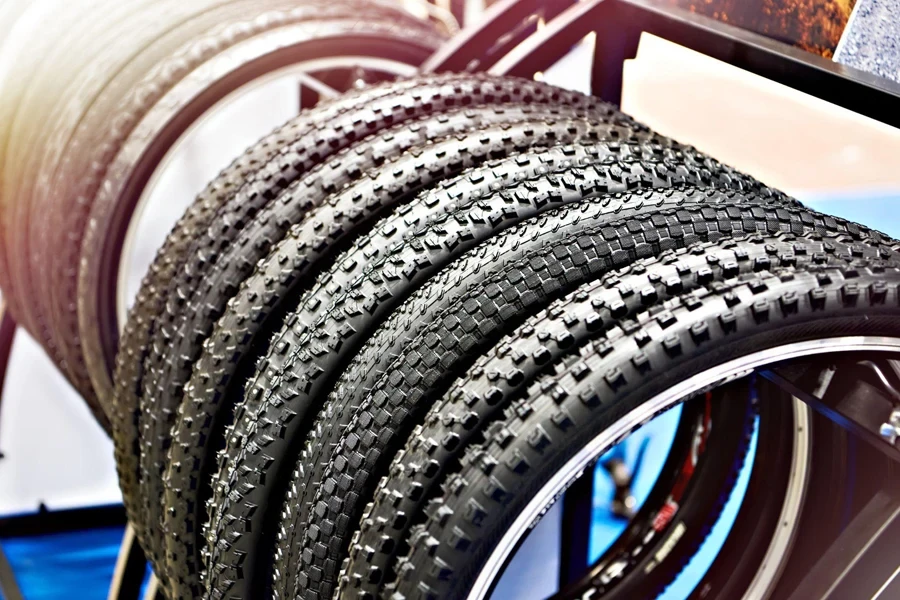
Handling: Tires with a uniform tread pattern offer a stable and predictable ride during leans, while those with tall side knobs and shorter center tread give a distinct “edgy” cornering feel as grip shifts to the side knobs. On paved roads, slick or minimally treaded tires ensure reliable handling. For loose gravel and dirt, tires with pronounced side knobs improve cornering stability and control, boosting rider confidence in varied terrain.
Other Considerations: Tires with siping, small slits in the tread knobs, improve grip on wet surfaces and uneven terrain by allowing knobs to conform better to the ground. Ramped front edges on center knobs lower rolling resistance for a smoother ride, while directional tread patterns enhance tire efficiency, ensuring optimal performance in acceleration, braking, and cornering across different conditions.
Tire Pressure
Maintaining the correct tire pressure is crucial for safety, performance, and tire longevity. Underinflated tires can cause poor handling, increased braking distances, and uneven tire wear. They are also more prone to blowouts from overheating. Overinflated tires provide a harsher ride and are more susceptible to damage from potholes and debris.
The recommended tire pressure ranges are:
– Passenger bikes: 30-35 psi
– Gravel bikes: 35-70 psi
– Mountain bikes: 22-35 psi
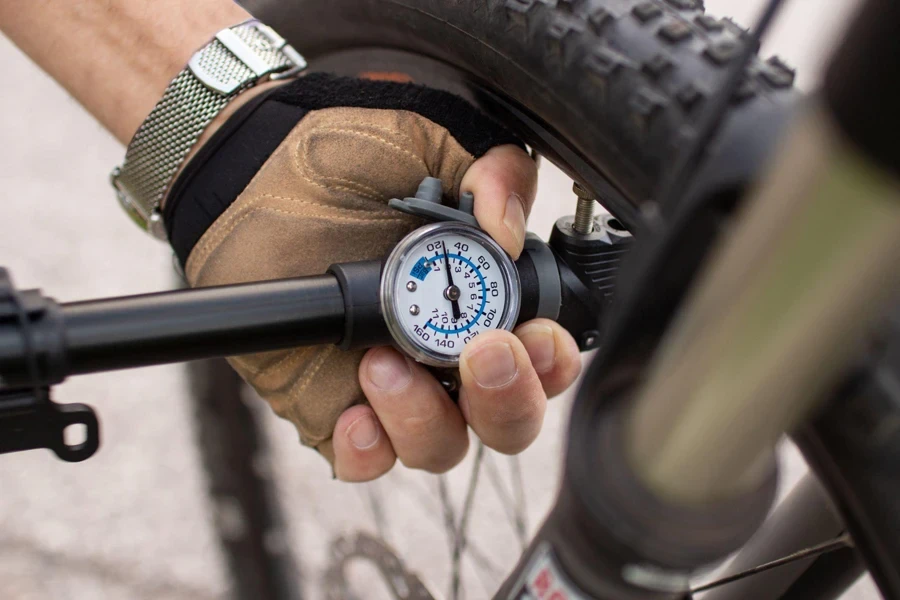
Lower pressures within these ranges provide more comfort and traction, while higher pressures reduce rolling resistance for better fuel economy. Check your tire pressure at least monthly to ensure you are running the optimal psi for your vehicle and driving conditions.
Puncture Protection Technologies
Tire manufacturers employ various technologies to enhance the puncture resistance of bicycle tires. Some common methods include:
1. Reinforced Breaker Layers:
– Many tires feature puncture-resistant breaker layers under the tread, made from tightly woven or cross-laid materials like Kevlar (Vectran), nylon, or polyester.
– Examples include Continental’s PolyX Breaker and Schwalbe’s SnakeSkin.
– These layers provide a barrier against sharp objects penetrating through to the inner tube.
2. Thicker Tread:
– Increasing the thickness of the tread rubber helps prevent punctures by providing more material for objects to pass through before reaching the inner tube.
– Tires like the Schwalbe Marathon Plus feature thicker tread, up to 5mm or more.
– Thicker tread does increase weight and rolling resistance.
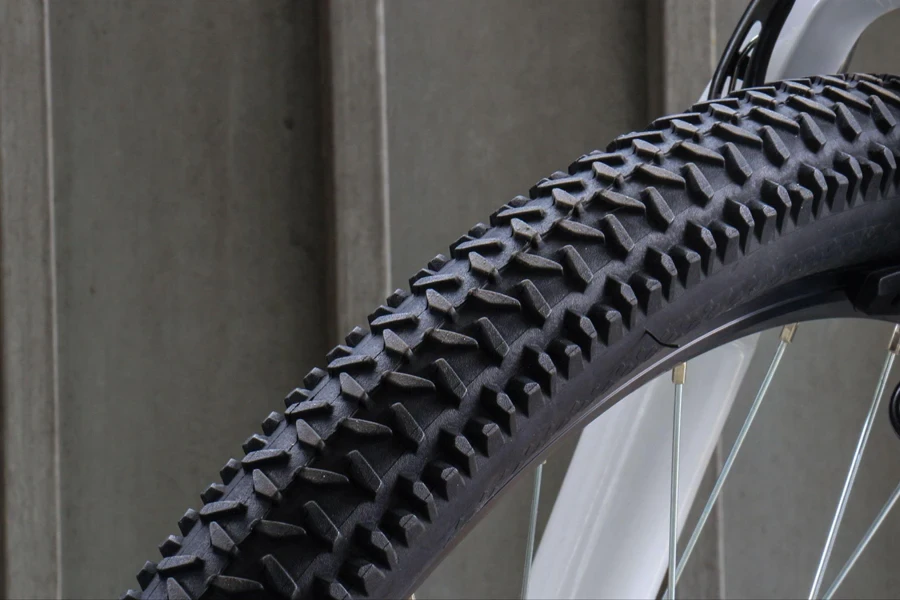
3. Reinforced Sidewalls:
– Some tires use dense weaves or additional layers on the sidewalls to prevent cuts and abrasion.
– Continental’s DuraSkin anti-cut fabric is an example.
– Reinforced sidewalls add some weight but can greatly improve durability.
4. Tubeless Technology:
– Tubeless tires eliminate the inner tube, instead sealing the tire directly to the rim.
– Liquid sealant inside the tire seals small punctures, up to about 3mm.
– Tubeless allows lower pressures without pinch flats, improving comfort and traction.
– Puncture protection and rolling resistance can be very good with tubeless, but setup and maintenance is more involved.
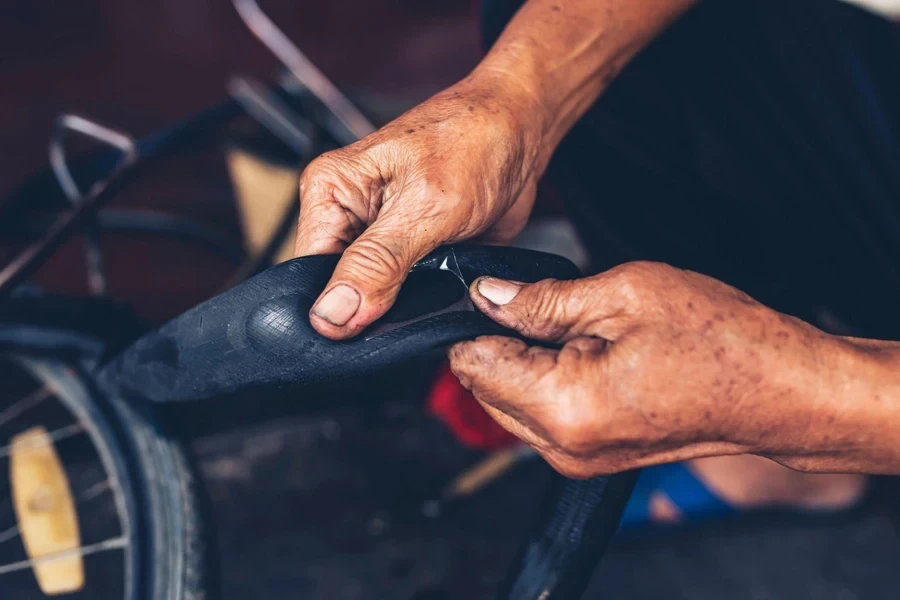
Trade-offs: Puncture Resistance vs Weight & Rolling Resistance
Increasing puncture resistance in tires almost always comes with the trade-off of higher weight and rolling resistance. The challenge is finding the right balance for your needs. Some examples:
– The Schwalbe Marathon Plus is extremely puncture resistant with its 5mm thick SmartGuard layer, but weighs around 900g and has relatively high rolling resistance. It’s a great choice for commuting and touring where flat prevention is the top priority.
– The Continental Gatorskin also has a thick PolyX Breaker for very good puncture resistance, but rolls slower and is heavier than many road tires. It’s a popular training tire.
– The Continental Grand Prix 5000 uses a thinner Vectran breaker layer and Black Chili rubber compound to provide good puncture resistance while still being light and fast. It’s a favorite for road racing and performance riding.
– Lightweight, race-oriented tires like the Continental Grand Prix TT or Schwalbe Pro One TT have minimal puncture resistance in pursuit of the lowest possible weight and rolling resistance.

In general, if you prioritize speed and performance, choose a tire with a puncture protection layer that is “just enough” without adding too much weight or rolling resistance. For commuting, touring, and riding where durability is key, tires with thicker tread and breakers are worth the trade-off in performance.
Conclusion
Choosing the optimal bicycle tire is essential for unlocking your customers’ bike’s full potential. By carefully considering factors like size, tread, pressure, and construction, the retailers can assist the consumers to dial in their ride experience for any terrain or condition. With the right rubber wrapped around the wheels, the customers will be ready to tackle any cycling adventure that comes their way. We intend to assist the retailers to catch up with them and further help the consumers. If you want to see more on “Cycling” and other sports, please hit the “Subscribe” button.
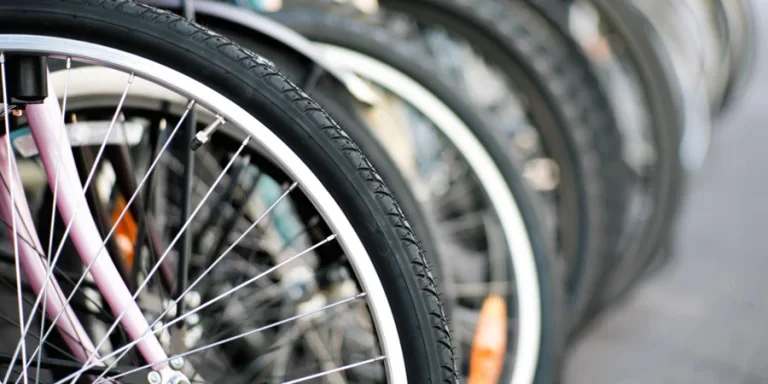




 Afrikaans
Afrikaans አማርኛ
አማርኛ العربية
العربية বাংলা
বাংলা Nederlands
Nederlands English
English Français
Français Deutsch
Deutsch हिन्दी
हिन्दी Bahasa Indonesia
Bahasa Indonesia Italiano
Italiano 日本語
日本語 한국어
한국어 Bahasa Melayu
Bahasa Melayu മലയാളം
മലയാളം پښتو
پښتو فارسی
فارسی Polski
Polski Português
Português Русский
Русский Español
Español Kiswahili
Kiswahili ไทย
ไทย Türkçe
Türkçe اردو
اردو Tiếng Việt
Tiếng Việt isiXhosa
isiXhosa Zulu
Zulu